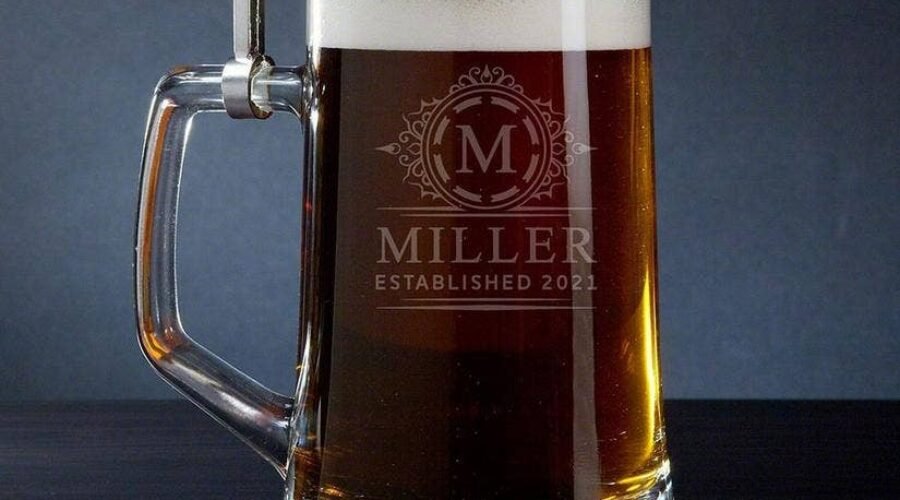How Concerned Should You Be About Forever Chemicals in Your Beer?
If you found out that Santa Claus’s sleigh was a significant contributor to climate change, your horror might approach that of the hopheads who recently discovered that beer is likely brimming with forever chemicals.
That April revelation came courtesy of the nonprofit Research Triangle Institute, which found higher-than-recommended levels of forever chemicals in almost every U.S. beer they tested. The chemicals are linked to increased risk of fertility issues and cancer, among other negative health outcomes.
Americans drink about 67.5 billion bottles of beer annually, so the findings are serious. Some in the craft beer industry, however, are taking issue with the way beer specifically is being called out.
“It doesn’t sit right with me because it pinpoints beer, when it is far from just a beer problem,” says the Brewers Association’s technical brewing projects director, Chuck Skypeck. “Really, it’s an environmental issue that we have to solve at the source, and it’s affecting manufacturers of bottled water, soda, infant formula, really anything that contains water.”
Indeed, the problem is far from exclusive to beer; wine and juice have also been found to contain forever chemicals. So, how concerned should beer lovers really be?
Everywhere Chemicals
Forever chemicals earned their moniker because they don’t break down over time. Technically, they are per- and polyfluoroalkyl substances, also known as PFAs. Created in the 1940s, these synthetic compounds became omnipresent in nonstick cookware, food packaging, cosmetics, carpets and countless household goods.
Within the category of PFAs are perfluorooctane sulfonates, or PFOs. These are the most widely used chemicals, deployed for their oil-, water- and heat-resistance. They’re present in fire-retardant fabrics and even firefighting foam.
The ubiquitous compounds may be invisible to the naked eye, but they have shown up in blood samples of 98% of the U.S. population. They are also swimming through our municipal water supply, likely due to industrial discharge, improper wastewater treatment and pollution.
“At least 45% of the nation’s tap water shows some contamination from forever chemicals,” notes Shannon Fitzgerald, a toxicologist and pharmacist for Drugwatch.com who holds a doctor of pharmacy degree from Howard University. “Beer is approximately 90% water, so it’s no surprise that PFAs are so prevalent in the beer they tasted.”
The current water treatment methods at the water supply level don’t remove forever chemicals, and therein lies the problem.
“They are in every part of our water supply, even residential faucets,” says Bryan Quoc Le, PhD, founder and principal food consultant at Mendocino Food Consulting. “This can be very startling to learn, which is why water treatment improvements are crucial to public health. Effective technologies have been identified, but it is difficult and expensive to implement them on a massive scale to treat the entire water supply.”
Brewers and Trade Groups Take Action
Instead of waiting for widespread federal action, many brewers are trying to ensure their beer remains untainted by chemicals. Some have been doing this for years.
“When we opened Lunchbox, one of the first big investments we made was installing a reverse osmosis water filtration system,” says Matthew Campion, co-founder of Lunchbox Brewing Company in Long Island. “It helps remove a wide range of contaminants including forever chemicals, heavy metals and bacteria and gives us full control over our water profile for brewing.”
Lunchbox’s co-founder and Matthew’s brother, Patrick Campion, says that they worked with filtered water even in the early days of brewing at home.
// Create the element
var script_687aaa1420daa = document.createElement(“script”);
script_687aaa1420daa.innerHTML = `
window.googletag = window.googletag || {cmd: []};
googletag.cmd.push(function() {
var adType = “leaderboard”;
var mapping;
var lbmapping = googletag.sizeMapping()
.addSize([1024, 0], [[970, 250], [970, 90], [1, 1], [728, 90]])
.addSize([728, 0], [[728, 90], [1, 1]])
.addSize([320, 0], [[1, 1], [300, 50], [300, 100], [320, 50], [320, 100]])
.addSize([0, 0], [[1, 1], [320, 50]])
.build();; // Size mapping for leaderboard ads
var medrecmapping = googletag.sizeMapping()
.addSize([1024, 0], [[300, 600],[300, 250]])
.addSize([728, 0], [300, 250])
.addSize([320, 0], [[1, 1],[300, 250]])
.addSize([0, 0], [[1, 1], [300, 250]])
.build(); // Size mapping for med rectengle ads
if(‘/39808611/article_page/article_leaderboard_1’ == ‘/39808611/article_page/article_leaderboard_1’
|| ‘/39808611/article_page/article_leaderboard_1’ == ‘/39808611/article_page/article_leaderboard_2’
|| ‘/39808611/article_page/article_leaderboard_1’ == ‘/39808611/article_page/article_leaderboard_3’) {
mapping = googletag.sizeMapping()
.addSize([1920, 0], [[728, 90]]) // >= 1920px
.addSize([1440, 0], [[728, 90]]) // 1440px-1919px
.addSize([730, 0], [[300, 250]]) // 730px-1439px
.addSize([0, 0], [[320, 100], [320, 50], [300, 100], [300, 50], [300, 250]]) // Up to 729px
.build();
} else {
mapping = adType == ‘leaderboard’ ? lbmapping : medrecmapping;
}
googletag.defineSlot(‘/39808611/article_page/article_leaderboard_1’, [],
‘div-gpt-ad-687aaa1420daa’).addService(googletag.pubads()).defineSizeMapping(mapping);
googletag.pubads().enableSingleRequest();
googletag.pubads().collapseEmptyDivs();
googletag.display(‘div-gpt-ad-687aaa1420daa’);
});
`;
// Append the script to the body
document.body.appendChild(script_687aaa1420daa);
“I have two young kids, so water quality has always been a big concern of mine,” Patrick says. “Beer is 90% water, so it’s the biggest ingredient.”
As a smaller producer with a five-barrel system that can handle 155 gallons a batch, he estimates that they spent between $5,000 to $6,000 on the water filtration system. While water cleanliness was top of mind, so was terroir.
“We prefer starting with water,” says Patrick. “It removes all total dissolved solvents. Because beer is from different regions of the world with different levels and types of minerals in their water, this allows us to replicate Czech versus German Pilsners.”
When brewing a Czech Pilsner, for example, the team adds specific salts and minerals to replicate the idyllic water profile found in the region itself, ensuring a more authentic flavor.
Skypeck says that this approach is typical of many of the 9,500+ small and independent brewers that the Brewers Association works with.
“We don’t officially report on the number of brewers using some form of filtration, but anecdotally, I’d say most brewers I ask about this have either a reverse osmosis, activated charcoal or both filtration systems installed,” Skypeck says. “In many cases, it was initially installed so they could recreate specific styles, but now that there is an increased awareness of forever chemicals, I think adoption will increase.”
Dozens of craft brewers have gone on the record discussing why they opt to filter their water, from itinerant cult brewers Nowhere in Particular to mainstays like Sierra Nevada Brewing Co. (It’s often related to the quality of flavor).
Activated carbon filters remove PFAs through absorption, explains Fitzgerald. “They are most effective in reducing long-chain PFAs,” she says. “They are quite cost-effective, but do require regular monitoring and maintenance.”
She notes that reverse osmosis is the most thorough filtration treatment available, but it will cost you more: “They are effective for a broad range of compounds, including long and short-term PFAs.”
According to a 2020 study from scientists at Duke University and North Carolina State University, reverse osmosis filters remove more than 90% of the forever chemicals tested, while activated carbon filters remove 73%.
Where Do We Go from Here?
There is no official database tracking forever chemicals in commercially available products, or any system that monitors which breweries, water manufacturers and infant formula makers are using filtration systems. As a result, choosing what to buy–and what to avoid–can feel overwhelming.
A first step, Skypeck suggests, is studying a water risk assessment tool. The Environmental Working Group offers a database that is searchable by zip code, and includes information on contaminants in your area, or the area in which a product is manufactured. The Brewers Association has also created a Water Risk Assessment Tool specifically for brewers, with guidance on how they can do more to manage their water efficiently.
Following the recent uptick in concern about water safety, Matthew says Lunchbox will begin to share their approach to water safety publicly.
“We are still deciding how we’ll communicate it, but we will probably include information on our menu in the tasting room, and certainly on our website and social media,” Matthew says. “It’s clearly becoming a bigger priority.”
// Create the element
var script_687aaa14216fe = document.createElement(“script”);
script_687aaa14216fe.innerHTML = `
window.googletag = window.googletag || {cmd: []};
googletag.cmd.push(function() {
var adType = “leaderboard”;
var mapping;
var lbmapping = googletag.sizeMapping()
.addSize([1024, 0], [[970, 250], [970, 90], [1, 1], [728, 90]])
.addSize([728, 0], [[728, 90], [1, 1]])
.addSize([320, 0], [[1, 1], [300, 50], [300, 100], [320, 50], [320, 100]])
.addSize([0, 0], [[1, 1], [320, 50]])
.build();; // Size mapping for leaderboard ads
var medrecmapping = googletag.sizeMapping()
.addSize([1024, 0], [[300, 600],[300, 250]])
.addSize([728, 0], [300, 250])
.addSize([320, 0], [[1, 1],[300, 250]])
.addSize([0, 0], [[1, 1], [300, 250]])
.build(); // Size mapping for med rectengle ads
if(‘/39808611/article_page/article_leaderboard_2’ == ‘/39808611/article_page/article_leaderboard_1’
|| ‘/39808611/article_page/article_leaderboard_2’ == ‘/39808611/article_page/article_leaderboard_2’
|| ‘/39808611/article_page/article_leaderboard_2’ == ‘/39808611/article_page/article_leaderboard_3’) {
mapping = googletag.sizeMapping()
.addSize([1920, 0], [[728, 90]]) // >= 1920px
.addSize([1440, 0], [[728, 90]]) // 1440px-1919px
.addSize([730, 0], [[300, 250]]) // 730px-1439px
.addSize([0, 0], [[320, 100], [320, 50], [300, 100], [300, 50], [300, 250]]) // Up to 729px
.build();
} else {
mapping = adType == ‘leaderboard’ ? lbmapping : medrecmapping;
}
googletag.defineSlot(‘/39808611/article_page/article_leaderboard_2’, [],
‘div-gpt-ad-687aaa14216fe’).addService(googletag.pubads()).defineSizeMapping(mapping);
googletag.pubads().enableSingleRequest();
googletag.pubads().collapseEmptyDivs();
googletag.display(‘div-gpt-ad-687aaa14216fe’);
});
`;
// Append the script to the body
document.body.appendChild(script_687aaa14216fe);
In 2023, the U.S. Environmental Protection Agency (EPA) announced a $2 billion funding bill designed to remove forever chemicals from the country’s water supply, with a focus on communities where water infrastructure is particularly vulnerable. The EPA also announced the final National Primary Drinking Regulation in 2024, which included new standards for safe levels of forever chemicals in drinking water. Public water systems were granted until 2029 to comply.
In recent months, however, EPA administrator Lee Zeldin has announced significant rollbacks in environmental regulations. While cleaning up the country’s water seemed set for the cutting room floor, in May, Zeldin released a statement that the EPA will keep the new regulations, while providing “common-sense flexibility in the form of additional time for compliance.”
Now, water utilities will have until 2031 to remove chemicals from the residential water supply, and the EPA will reconsider limits on some of the other PFA chemicals name-checked in the original legislation: PFHxS, PFNA, HFPO-DA and PFBS.
Forever chemicals are everywhere, and beer lovers will have to shop as wisely as they can with the information available.
“I’ve been asking almost every brewer I’ve talked to recently what they do to filter their water,” Skypeck says. “Beer lovers should do the same. But remember: it’s not just beer. This one report may make it seem like it is, but the story is much, much bigger than beer.”
More Beer Coverage
- You may have noticed that draft beer menus are getting shorter. We explain why.
- Read about all the creative ways that small breweries are making big pivots to stay afloat.
- The golden age of the lager is here, and these festivals prove it.
- In defense of the pastry stout.
- Homebrewing isn’t the popular hobby it once was. What went wrong?
TOP-SELLER
Personalized Beer Stein
In Stock | $60.00
The post How Concerned Should You Be About Forever Chemicals in Your Beer? appeared first on Wine Enthusiast.


